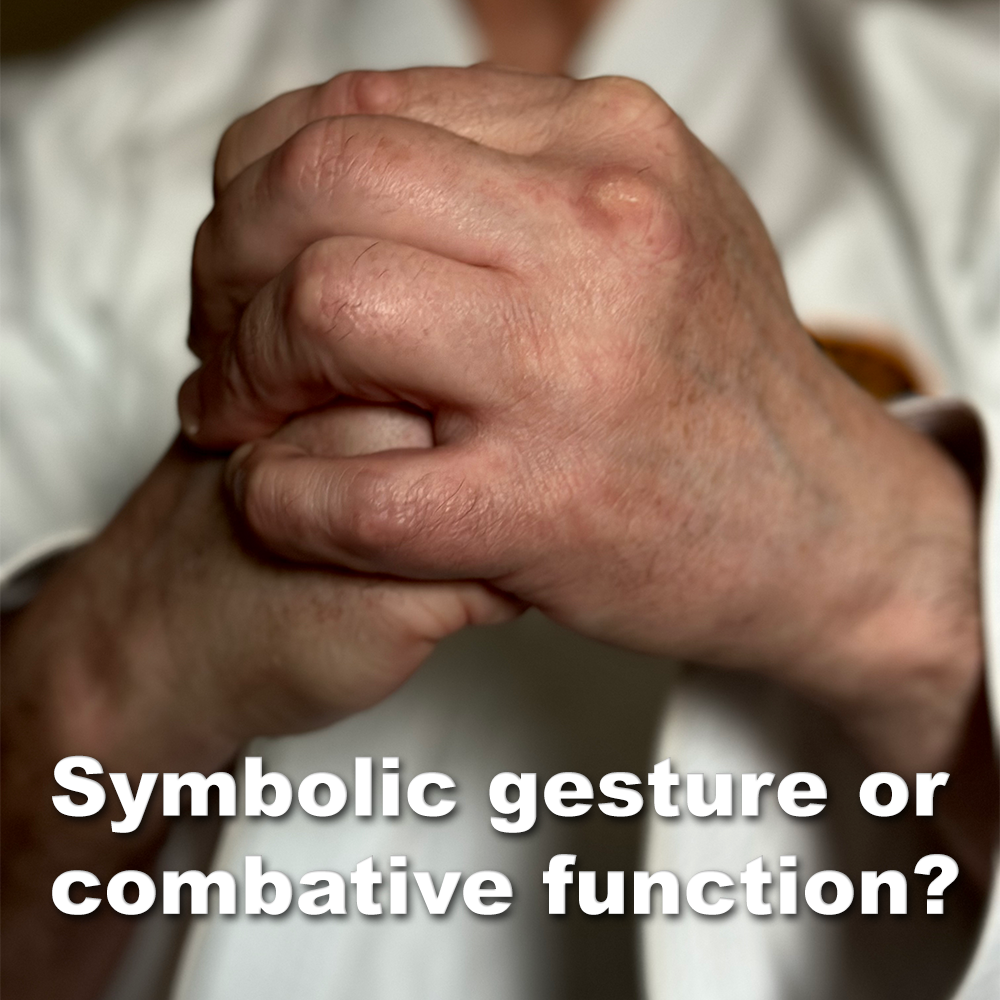
Symbolic gesture or combative function?
Posted by ADAM CARTER on DEC 22, 2023

Symbolic gesture or combative function?
The martial arts world can be a tapestry woven with intricate traditions and practices.
One intriguing thread that runs through the practice of kata, specifically, the enigmatic movements often interpreted as “salutations.”
These seemingly ritualistic gestures have some practitioners attributing them to hidden meanings and even ancient Chinese symbolism.
However, perhaps a closer examination reveals a compelling alternative: that these movements, stripped of symbolic embellishments, represent the very essence of karate – combative effectiveness.
To delve into this perspective, we must first acknowledge the human tendency to rationalize the unknown. When faced with ambiguity, we often create narratives to fill the gaps in our understanding.
This phenomenon, known in psychology as “rationalization,” has infiltrated the interpretation of kata, leading to the misunderstanding of functional techniques seen as mere symbolic gestures. This overlooks the historical context and core purpose of kata.
Originally created for practical combat, kata originated as two-person drills, distilled into solo forms to preserve and transmit valuable self-defense knowledge.
In a bygone era devoid of formalized training halls, these mnemonics served as portable libraries of principles and techniques, honed against the threat of “villains or ruffians” (as aptly described by Funakoshi). It is within this context that every movement of a kata, including the so-called “salutations,” should be scrutinized through the lens of combat functionality.
Consider the tumultuous period in the first part of the 20th century in Japan, amidst rising tensions with China. If kata truly harbored secret Chinese gestures, wouldn’t such politically charged symbolism been purged as Japan sought to establish “karate” as a distinct, national identity?
The very notion of retaining gestures deemed politically inconvenient paints a conflicting picture of kata as a repository of hidden cultural references.
Furthermore, attributing non-combative functions to certain kata movements disregards the expertise of their creators – skilled martial artists grappling with the real-world threat of violence.
It seems illogical to suggest that individuals whose lives depended on practical self-defense would deliberately weave empty gestures into their training methods.
Would we, armed with the knowledge of modern threats, incorporate non-essential gestures into our self-defense routines?
To truly understand kata is to challenge these assumptions, to delve beyond the surface of symbolism and unearth the raw combat potential hidden within its movements.
Recognizing this, Toguchi Seikichi (1917-1998), a revered Goju Ryu master, eloquently declared, “There are no ‘salutation’, religious or empty movements in kata. All movements in the kata have meaning.”
Indeed, every detail, from the subtle shift of weight to the direction of the gaze, potentially holds tactical significance within the larger context of kata.
To label these movements as “salutations” or describe them with extraneous symbolism risks obscuring their true purpose. In essence, it’s the equivalent of attaching a decorative label to a vital cog in a machine, diverting attention from its critical function. Such labeling fosters misinterpretations and stifles deeper exploration of the underlying principles embedded within each kata.
We must question the origins and meanings behind these labels, engage in critical analysis of historical context, and most importantly, view every movement through the lens of practical application.
Only then can we truly unlock the secrets hidden, not within cryptic gestures, but within the very essence of the kata itself – a combative legacy waiting to be rediscovered.
What do you think? Are there symbolic gestures in your karate?
